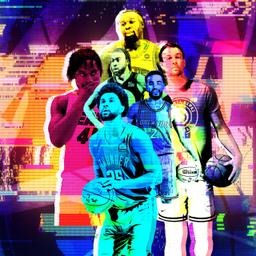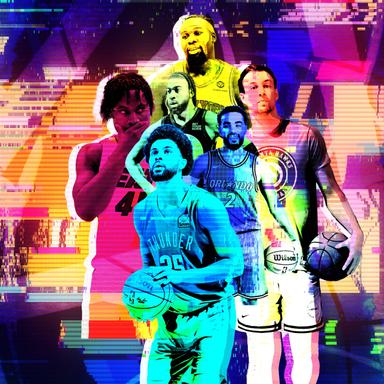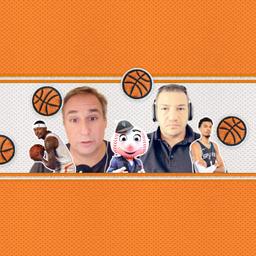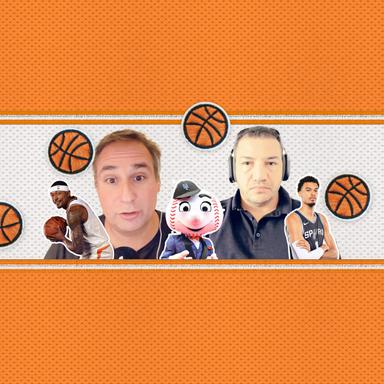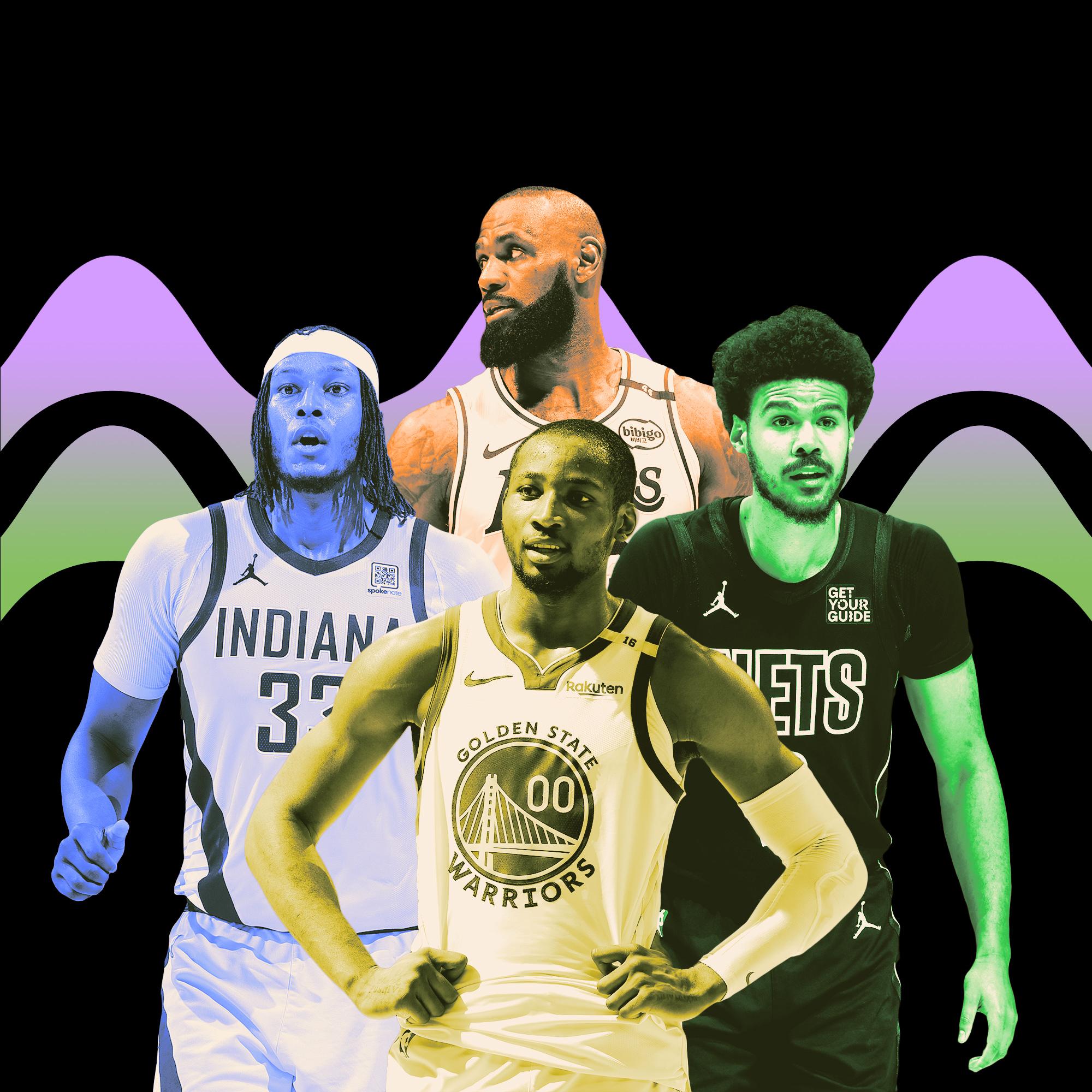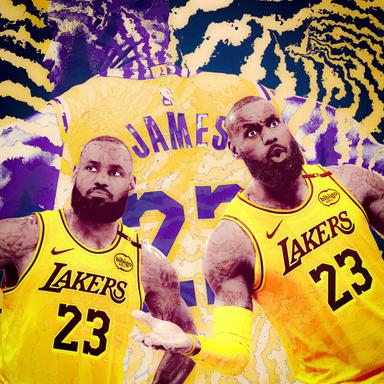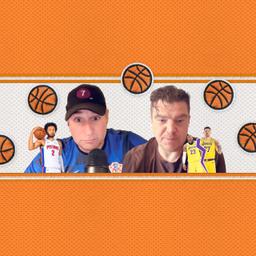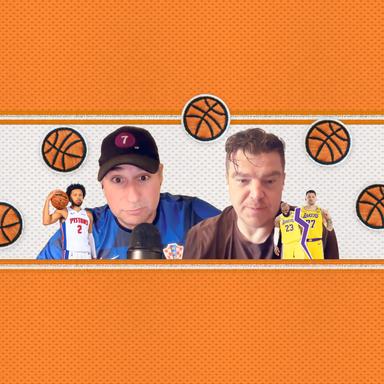We’re now three weeks into the NBA offseason and just about every meaningful bit of dust has settled. So with the landscape remodeled and several hierarchies in flux, here are a few observations, predictions, and trends I most find interesting about a league that can’t stop moving.
A Case for the Philadelphia 76ers
Last week I sat down at a coffee shop and wrote a few hundred (mostly optimistic!) words about how the pendulum of judgment has swung too far against the 76ers. In every conversation I’ve had about the weakened Eastern Conference, they’re never mentioned without an eye roll or shoulder shrug. I fully understand this sentiment and agree with it, coming off a calamitous 24-win season that didn’t entirely feel like a fluke. But on the other hand, groupthink is treacherous terrain. It isn’t that hard to look around, assess the landscape, and construct a pro-Sixers case for the 2025-26 season.
Then, a few hours later, the team announced in an official press release that Paul George had undergone an arthroscopic procedure on his knee after injuring it during a workout. No timetable for his return has been given and it’s unknown just how severe his surgery actually was. Needless to say, I considered deleting everything I wrote that morning. George only played 41 games last season in the first year of his fully guaranteed four-year maximum contract; he turned 35 a few months ago and averaged an inefficient 16.2 points per game.
The news highlighted how persistently unstable the Sixers are, and why expectations for a team that’s spent the last decade trafficking in controversy, dysfunction, and outlandishly bad luck should be padlocked behind a steel door, inside a bunker that’s several hundred feet underground.
Joel Embiid and George are unreliable health-related question marks who, when healthy, must stabilize a pocket-sized backcourt and paper-thin bench that will require consistent production from players like V.J. Edgecombe and Jared McCain, who have little to no NBA experience. It’s very hard to get excited about a team that employs Andre Drummond, Kyle Lowry, Eric Gordon, Kelly Oubre Jr., and Ricky Council IV.
Now imagine a “but” that’s powerful enough to redirect an aircraft carrier drifting into the mouth of a hurricane …
BUT look at all that talent! It’s as auspicious as it is tantalizing. There’s a world where Tyrese Maxey makes his first All-NBA team with better efficiency from easier shots; McCain picks up where he left off before suffering the knee injury that cut short his Rookie of the Year campaign; Edgecombe injects two-way athleticism into a creaky roster that badly needs it; and restricted free agent Quentin Grimes provides enough steady 3-point shooting and tertiary playmaking to open up the floor whenever he’s on it.
In a conference that’s seemingly wide open, there’s an opportunity here for the Sixers to concretize a winning formula that isn’t solely dependent on Embiid’s availability. It’s possible to earn a top-six record and prioritize the condition of his body to rev up for the weekslong marathon of playoff competition. This may be pie-in-the-sky logic, but it’s also not impossible. The best-case scenario Sixers are probably better than the New York Knicks, Cleveland Cavaliers, Orlando Magic, and Atlanta Hawks. It’s understandable to overlook them, but at a certain point—with the Boston Celtics and Indiana Pacers on the outside looking in—it’s OK to take them seriously, too, even if PG’s latest surgery reinforces how inescapable the sorrow this organization seems destined to endure truly is.
The Los Angeles Clippers Are So Back!
As The Ringer’s resident defender of Los Angeles’s other basketball team, the past few weeks have been, in several ways, my own personal Summer of George. We’re back, baby! Last year, the Clippers were a genuine contender that had the great misfortune of running into Nikola Jokic in the first round of the playoffs. Their response was to turn Brook Lopez into the best backup center in the league and then essentially exchange Norman Powell for John Collins and Bradley Beal. Pretty good!
I’ve already praised the Lopez signing and broken down why trading for Collins made a lot of sense, but plopping Beal (sans his cap-killing contract and no-trade clause) onto a roster that could really benefit from the level of playmaking and independent shot creation he can provide is a cherry on top of L.A.’s summer sundae. Ideally, Beal will complement Kawhi Leonard and James Harden in myriad ways, whether as a capable decision-maker on the ball or someone who can replicate Powell’s off-ball movement and the gravity that comes with it.
Beal’s production in Phoenix wasn’t bad. His true shooting percentage in 106 total games over the past two seasons was 60.3. He drilled 3s, applied pressure around the basket, and feasted in the midrange. The problems were less about his talent and more about how he fit beside Kevin Durant and Devin Booker on a roster that was constrained by a CBA that prevented them from affording elite complementary pieces. The Clippers are not in that same mess. This team is deep and has a defensive identity that should be enhanced with Lopez now in the fold.
These new faces also create some interesting lineup choices for Ty Lue. Knowing Leonard, Harden, and Ivica Zubac are guaranteed starters on opening night, is Beal a lock to join them, or does Lue address the defensive issues that may sprout from a Harden-Beal backcourt and roll with Kris Dunn and Collins, Derrick Jones Jr., or Nicolas Batum instead?
Staggering their top three scorers makes sense; alongside Bogdan Bogdanovic and Lopez, the Clippers can embolden Beal by having him lead second units while Leonard and Harden sit. There’s insurance here, too, if either of those two All-Stars gets hurt or needs a night off. Beal has more experience and vision than Powell when it comes to setting up others with the ball in his hands.
This roster is creaky enough to sow doubt in their ability to emerge from the regular season without any concerning health problems. But they’re also flexible, deep, and experienced. Every other team in the Western Conference will walk into a seven-game series against them wishing the bracket had broken a different way.
The Toronto Raptors Could Be … Pretty Good?
In the aftermath of Masai Ujiri’s unceremonious exit, it’s hard to separate Toronto’s exorbitant payroll from the talent on its roster. This is a wildly expensive basketball team that’s inexplicably over the tax. At the same time, the Raptors can—and maybe even should?—be a competitive playoff team this season, which is meaningful considering it’s been three years since they last competed in the postseason.
So much of their collective growth depends on the strides Scottie Barnes is able to make in what’s somehow already his fifth season, a marginal concern considering his development plateaued a bit last year. Barnes’s 3-point shooting fell down to a concerning 27.1 percent—the largest drop by any player who logged at least 2,000 minutes—and, on a team that couldn’t space the floor, he found himself settling for too many long 2-pointers.
It’s not super encouraging when your 23-year-old franchise player has the least efficient season of his career after three promising campaigns that included an All-Star appearance and a Rookie of the Year trophy. Barnes’s outside shot will absolutely need to perk up if the Raptors are going to even be average on offense.
But there’s still so much to be excited about, including an on-court persona that’s impolite in all the best ways. He has the all-around pedigree of an All-NBA candidate: size, feel, competitiveness, and two-way positional versatility that’s enhanced by a willingness to pass the ball. He can see the entire floor running a high pick-and-roll and has enough craft, speed, and upper-body strength to find an advantage when defenses switch the initial action. There are tight pocket passes, corner skips, and lightning-quick decisions to beat rotating opponents. His teammates cut hard knowing they will get the ball when their own man is too concerned with slowing Barnes down. That’s very good.
From there, his supporting cast, when healthy, is simultaneously overpaid and underrated. Brandon Ingram, Immanuel Quickley, RJ Barrett, and Jakob Poeltl are all very good NBA players who, around Barnes, have enough playmaking, outside shooting, and defensive tenacity to form one of the more competent and imposing starting fives in the Eastern Conference. Off the bench, Ochai Agbaji and Gradey Dick can space the floor as spot-up threats who don’t panic when they have to put the ball on the floor. Ja’Kobe Walter and incoming rookie Collin Murray-Boyles are unproven with upside.
The most intriguing subplot is the on-court relationship Barnes develops with Ingram, who was acquired before the trade deadline and then spent the rest of the season sidelined with a badly sprained ankle. A 27-year-old pseudo-star whose thin postseason résumé deserves less criticism when you consider several factors outside his control (questionable health and unreliable teammates), Ingram could be an ideal second option who can make just about any play when tasked with the responsibilities normally held by a primary ball handler.
He’s a few years removed from his days as an accurate high-volume 3-point shooter, but in an environment that doesn’t overextend his talent there’s a practical path for that version of Ingram to reappear.
How much all this costs isn’t entirely negligible, of course. Reckless spending in this financially stringent era can directly lead to depth-related constraints. Hence, Toronto is not a deep team. It needs production from rookie-scale contracts and veterans who couldn’t earn more than a minimum deal. If ownership wants to duck the tax, a thin bench goes hollow.
How the Raptors got here is a frustrating sore spot for those who remember and appreciate the winning pieces from which they pivoted away. Two years ago, this club employed Pascal Siakam, OG Anunoby, and Fred VanVleet, three excellent players who, on their current contracts, make less sense beside each other than they do supporting Tyrese Haliburton, Jalen Brunson, and Kevin Durant, respectively.
It’s more than fair to criticize Toronto’s reactive approach with each one, though. VanVleet left for nothing as a free agent, while Siakam and Anunoby were both traded in the final year of their contracts, which inhibited Toronto from maximizing its return (three first-round picks and the right to pay Quickley and Barrett more than they’re probably worth).
And so here we are, trying to parse a team that’s somehow over budget and overlooked. I can’t say where the long-term outlook of this franchise stands, but for the 2025-26 season I’m probably a bit more hopeful than most about Toronto’s ability to finish with one of the six best records in its conference.
Every LeBron James Rumor Is Boring
It’s not that the outcome isn’t newsworthy, but, all the melodrama surrounding LeBron James and his relationship with the Los Angeles Lakers is, to me, exhausting. L.A.’s first, second, third, fourth, and fifth priorities are now Luka Doncic, which inserts more ambiguity into the $52.6 million it is now paying a 40-year-old James. The situation is uncomfortable. Here we have a franchise that exists to cater to star talent no longer wanting to employ the biggest superstar of all.
What comes of this dilemma—which was foreseeable and largely spurred by LeBron’s decision to let money and optics supersede his pursuit of a fifth ring—is anyone’s guess. Will he really be traded to the Mavericks, Knicks, or Warriors? Could a buyout lead to him signing with the Cavaliers? As gossip, it’s lush. As far as realistic scenarios go, it’s more likely that absolutely nothing happens. He opted into his contract and now has to deal with the consequences of that decision. Whatever those may be, please wake me when something of consequence actually happens.
More People Should Be Talking About Victor Wembanyama
So many teams in the Western Conference had what can modestly be described as a great summer: The Oklahoma City Thunder extended Jalen Williams and Chet Holmgren; the Houston Rockets traded for Kevin Durant; the Denver Nuggets stabilized their flimsy rotation; and the Los Angeles Clippers added both Bradley Beal and Brook Lopez. All wonderful, necessary, low-risk moves to get better in a conference that takes no prisoners.
Hiding in plain sight, though, is a galaxy-gobbling monstrosity whose third season may overshadow all of the above. A year ago, Victor Wembanyama was a panic-inducing abstraction. More hype than substance, even if the former was perfectly justified and impossible to exaggerate. Today, at just 21 years old, he’s already more potent than notional, well established as the most intimidating defensive presence the NBA has seen in a very long time, with a growing offensive repertoire that may be unstoppable sooner rather than later.
I just wonder if Wemby is on the verge of a leap that none of his rivals can do anything about. If he stays healthy after last year’s blood clot scare, we should be prepared for an MVP candidate, first-team All-NBA lock, unanimous Defensive Player of the Year type of explosion. Having De’Aaron Fox—who’s extension eligible on Aug. 3—running point for a young, athletic, large, defensive-minded supporting cast doesn’t hurt. If Devin Vassell can stay upright, Stephon Castle makes notable improvement scoring the ball, and they get decent contributions from lottery picks Dylan Harper and Carter Bryant, the Spurs might actually be in business sooner than most reasonable observers expect them to be.
The NBA’s Era of Incompetence May Be Upon Us
If the phrase “one is random, two is a coincidence, and three is a trend” is accurate, then the NBA may be entering its very own amateur hour. The Sacramento Kings, Phoenix Suns, and New Orleans Pelicans have spent this summer (at least) behaving with very little self-awareness, concern, or understanding of what it takes to build a sustainably competitive basketball team. Their decisions have been shortsighted to the point of disorientation. Some even carry a whiff of the same delusional stench of a bygone era, when dumb was chic and NBA front offices didn’t know how to execute whatever plan they decided to pursue.
By snuffing out the delightful “Light the Beam” era with one dysfunctional move after another, the Kings have gone out of their way to remind a long-suffering fan base that their past traumas very much still exist. Most recently, they traded Jonas Valanciunas (a solid backup) for Dario Saric (a flimsy 12th man) so they could cut enough salary to afford Dennis Schröder, an illogical fit for a team that already has Malik Monk, DeMar DeRozan, and Zach LaVine on it. Sacramento might have the worst defense in the league and should be obligated to free Domantas Sabonis before his prime wastes away. What a mess.
The Suns can’t be analyzed before I spend at least five minutes sucking my teeth. They waived and stretched Bradley Beal—gluing $19.4 million of dead money onto their books for the next five seasons—to avoid the luxury tax one year after Mat Ishbia publicly scolded the rest of the league for not venturing into the second apron. Such an about-face would be comical if it wasn’t also a painful reminder of how the whims of one arrogant man can sink the hopes and dreams of an entire fan base. Trading Durant for Jalen Green, Dillon Brooks, and their own first-round pick, using that pick to select center Khaman Maluach, and then offloading their last tradable pick for Mark Williams (another center!) is all such a terrible way to allocate scarce resources.
Adding insult to injury, the Suns tacked two years and $145 million onto Devin Booker’s contract when he’s already signed through 2028 (and will turn 29 in October). It was a predictably desperate gasp from an organization that’s dead set on pretending it can be relevant over the next few years. Booker is awesome. But, in business, loyalty and self-destruction often go hand-in-hand. Instead of extending him this summer, Phoenix should’ve canvassed the league for a massive windfall and begun the process of a sincere rebuild. That’s what a prudent team would’ve done. This one, though, has delayed the inevitable and will likely suffer for it.
Last but not least, shout-out to Joe Dumars, Troy Weaver, and the Pelicans. What a month. After a bewildering series of moves that included the acquisition of Jordan Poole and a cataclysmic decision to trade away an unprotected first-round pick in next year’s draft (still funny) just so they could move up to take Derik Queen—someone who best functions in the exact same role franchise player Zion Williamson already fills—New Orleans managed to scrounge up enough sense to extend Herb Jones, a defensive thorn who will hopefully be traded to a serious franchise once he’s eligible in January.
So far as I can tell, the Kings, Suns, and Pelicans don’t have a credo that extends beyond the mistaken belief that they should be taken seriously. Their respective ownership groups are either blinded by ego or negligently indifferent. They expect to win without a foundational identity or a roster that’s anywhere close to making the playoffs.
(The Dallas Mavericks would be in this group if not for a stroke of dumb luck in May’s lottery, and almost three years after I wrote this piece about the Chicago Bulls, there’s no conclusion to draw from their actions other than a guiding principle that can be summed up as “we enjoy being mediocre and will do whatever it takes to stay that way.”)
The Brooklyn Nets’ Moves, Though, Make Sense
Perhaps I’m in the minority, but every time I look at the moves Brooklyn made this summer—as an organization currently sitting near rock-bottom of a lengthy rebuild with little interest in committing any shortcuts to end it—I think most of them are rational, if not shrewd.
Fully realizing how blurry a bleak situation can appear when scrutinized too closely, let’s zoom out: Heading into last month’s draft, the Nets had multiple first-round picks and more cap space than every other team combined. They then spent the next few weeks combining those resources to telegraph their desire to be an abomination in 2026. First, they participated in a three-team trade that brought back Terance Mann and the draft’s no. 22 pick from Atlanta. Then, instead of trading any of their picks, they broke precedent and used all five of them to construct what has to be one of the least experienced rosters in recent league history. (Full disclosure, as someone who doesn’t watch college basketball: Egor Dëmin is my favorite player in this class. He’s a brilliant shot creator and his iffy 3-point stroke looked gorgeous throughout Las Vegas summer league.)
A couple of weeks later, they moved Cam Johnson to the Denver Nuggets for Michael Porter Jr.’s expensive contract and an unprotected 2032 first-rounder, which could be the most valuable incoming trade asset in the league. It’s all what a smart front office with cap space should do: Take unwanted salary off another team’s hands and then make them pay you a premium for it. In this case, Brooklyn also received a more talented player who’s nearly three years younger than the one they let go.
Yes, flatter lottery odds make the Nets’ strategy less certain than something like it would’ve been a few years ago, but their implementation of it is sound. Brooklyn doesn’t control its own pick in 2027 and would like to draft a franchise player before then. Even if the ping-pong balls don’t go the Nets’ way next year, they still have nine tradable future first-round picks—which is three more than any other team—including unprotected picks from the Knicks in 2027, 2029, and 2031 from the Mikal Bridges trade. That’s … phenomenal.
The Celtics Will Be (Very?) Bad
This is a prediction disguised as an observation: In light of Jayson Tatum’s ruptured Achilles tendon and every personnel decision they’ve made since, it’s more than fair to believe that the Celtics are preparing to tank away this upcoming season. A frontcourt rotation of Neemias Queta, Luka Garza, and Xavier Tillman speaks volumes. Boston is still in the second apron and about $20 million over the luxury tax, but, regardless of what Brad Stevens has said, it would be a true stunner if it didn’t shed more money during the season to dodge repeater tax penalties. The likely casualties are Anfernee Simons and Georges Niang, but no one should be shocked if/when Sam Hauser gets traded.
Being bad makes a lot of sense for the Celtics. So does consistently letting Baylor Scheierman, Hugo Gonzalez, JD Davison, and Josh Minott dictate action with the ball in their hands instead of putting unnecessary miles on Jaylen Brown and Derrick White’s legs. If they go that route, having one of the worst records in the league will definitely be on the table.
